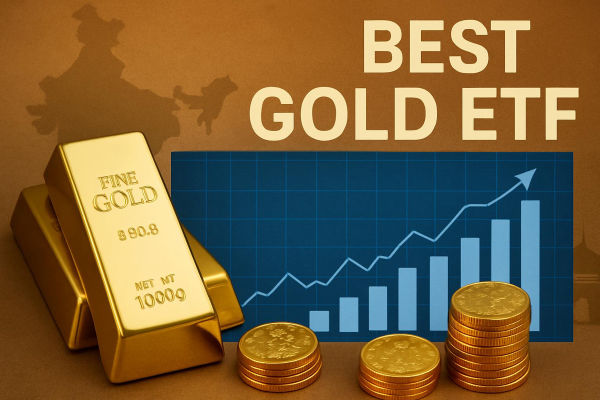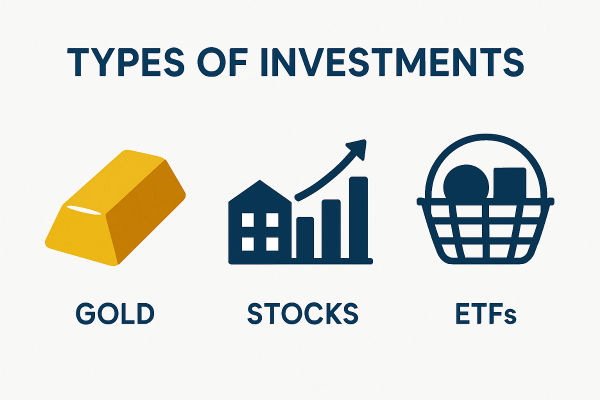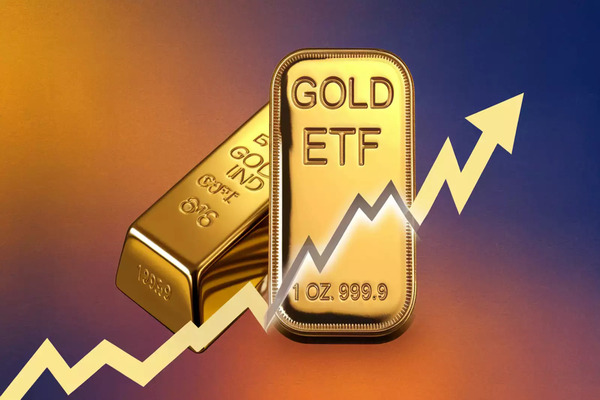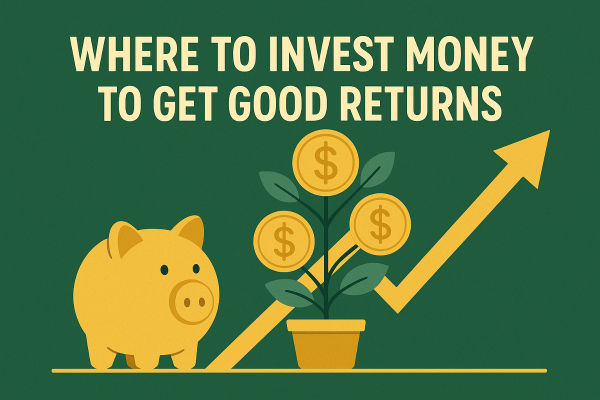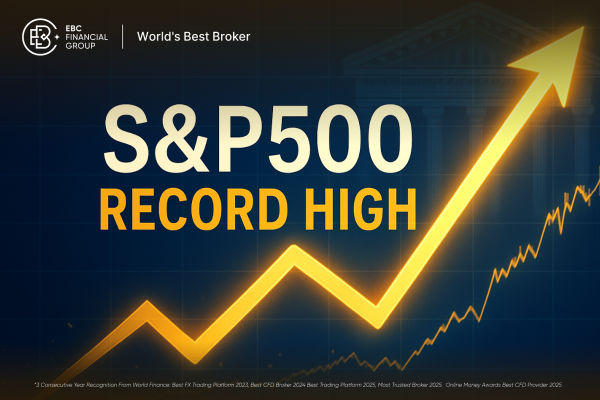For an easy, liquid, and convenient way to invest in gold in India, target large, liquid Gold ETFs that feature low expense ratios and a solid track record.
In 2025, consistent standouts by size, liquidity, and costs include Nippon India ETF Gold BeES, SBI Gold ETF, HDFC Gold ETF, ICICI Prudential Gold ETF, Kotak Gold ETF, and UTI Gold ETF. They hold a substantial market share, trade actively on the NSE, and routinely report tracking error and tracking difference.
For investors with limited brokerage access, most of these ETFs also have companion FoFs (fund-of-funds) that let you invest without a demat account.
Top 10 Best Gold ETFs in India in 2025
| ETF (Ticker) |
Indicative AUM (₹ cr) |
TER (latest cited) |
Notes |
| Nippon India ETF Gold BeES (GOLDBEES) |
~22,000 |
~0.55% |
Liquidity leader; long history. |
| SBI Gold ETF (SETFGOLD) |
~8,800+ |
~0.70% |
Large corpus, robust disclosures. |
| HDFC Gold ETF |
~10,691 |
~0.59% |
Rapid AUM growth; daily TE disclosure. |
| ICICI Prudential Gold ETF |
~7,850–8,135 |
~0.50% |
Among the lowest TERs at scale. |
| Kotak Gold ETF |
~7,611 |
~0.55%
|
Large, liquid; long record. |
| UTI Gold ETF |
~1,968 |
~0.48% |
Early-vintage ETF; solid costs. |
| Aditya Birla Sun Life Gold ETF |
~1185 |
~0.52% |
Mid-sized with improving traction. |
| Invesco India Gold ETF |
~298.92 |
~0.55% |
Long history; FoF also available. |
| Mirae Asset Gold ETF |
~734–788 |
~0.34% |
Newer but scaling; transparent. |
| Motilal Oswal Gold ETF |
~424.61 |
~0.55% |
Competitive fees; simple brief. |
1) Nippon India ETF Gold BeES (Ticker: GOLDBEES)
Why It Stands Out: One of the oldest and most liquid gold ETFs in India; strong secondary-market depth.
Scale & Cost: Market-cap/Assets under management (AUM) leadership and competitive Total Expense Ratio (TER) (Notes 0.55% for the underlying ETF).
2) SBI Gold ETF (Ticker: SETFGOLD)
Why It Stands Out: Large AUM with wide distribution; frequent disclosures on tracking error.
AUM & TER: AUM in the several-thousand-crore range; TER ~0.70% on the regular plan as per recent snapshots; factsheet (June 2025) details methodology for tracking error/difference.
3) HDFC Gold ETF
Why It Stands Out: Rapid AUM growth in 2024–25; solid 1-year showing alongside peers during gold's bull leg.
AUM & TER: It displays an AUM of approximately ₹10,700 crore and TER around 0.59% as of the end of July. The scheme document outlines daily tracking error disclosures.
4) ICICI Prudential Gold ETF
Why It Stands Out: Large corpus and one of the lowest TERs (~0.50%) among big funds.
AUM: ~₹6,000–8,000 cr as per listings/portals around mid-2025.
5) Kotak Gold ETF
Why It Stands Out: Large, liquid, and long track record; clear fund disclosures.
AUM: ~₹7,600 cr.
Notes: Standard factsheets detail appropriateness and risk assessment.
6) UTI Gold ETF
Why it stands out: One of the earliest gold ETFs (inception 2007); stable AUM and competitive pricing.
AUM & TER: Analytics indicates its AUM at approximately ₹1,968 cr and TER around 0.48%.
7) Aditya Birla Sun Life Gold ETF
Why It Stands Out: Mid-sized option with steady growth in 2025.
AUM & Performance: Its company report from March to July 2025 emphasises AUM situated in the ₹700–800+ cr range and 1-year return context in line with the gold surge.
8) Invesco India Gold ETF
Why It Stands Out: Long history and reasonable costs.
TER: Invesco notes a 0.55% expense ratio for the underlying ETF in its July 2025 factsheet.
Note: The AMC also runs FoF options for non-demat investors.
9) Mirae Asset Gold ETF
Why It Stands Out: A newer entrant relative to legacy giants but scaling up; strong disclosure culture.
AUM & TER: Presentations/factsheets around June–Aug 2025 cite AUM ~₹730–790 cr and TER in the mid-0.3% area for the ETF.
10) Motilal Oswal Gold ETF
Why Invest in Gold ETFs And Why Now?

In 2025, gold prices are surging due to persistent global inflation rates, occasional risk-off phases, and strong purchases by central banks.
For Indian investors, Gold ETFs offer:
Purity and Convenience: You will own units backed by 99.5% purity gold, without storage hassles.
T+ Settlement and Intraday Liquidity: Buy/sell anytime during market hours at exchange-discovered prices.
Transparent Costs: One line item, the total expense ratio (TER), and disclosed tracking error/difference.
Tax Clarity: Gold ETFs are categorised as non-equity funds according to the revised 2024–25 regulations. For context, long-term capital gains are typically taxed at 12.5% without indexation, whereas short-term gains are taxed based on slab rates or the new rules.
What to Look For Before Selecting the Above Options?
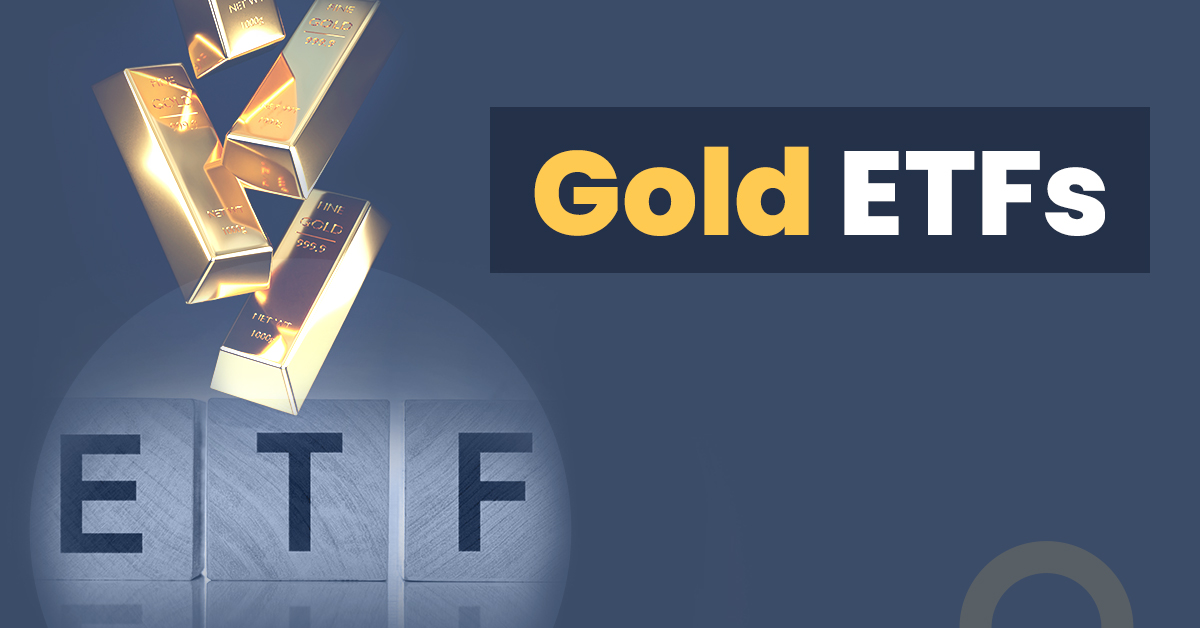
AUM & Liquidity: Larger funds generally result in narrower bid-ask spreads.
Expense Ratio: TER usually falls between approximately 0.34% and 0.70%. Lower costs generally translate to tighter tracking over time.
Tracking Quality: Review each fact sheet for any tracking errors and discrepancies in disclosure.
Spread Discipline: Check live quotes on NSE before placing orders, and use limit orders to avoid paying the spread.
Operational Ease: If you don't have a demat, consider the corresponding Gold ETF FoF versions from the same houses.
Frequently Asked Questions
1) Is a Gold ETF Better Than Buying Physical Gold or SGBS?
ETFs win on liquidity and ease. SGBs can outperform on maturity due to interest plus potential capital gains tax exemption at redemption. However, they lock you for years and engage in trading with broader discounts/premiums on the market.
2) How Much of My Portfolio Should Be In Gold?
Many asset-allocation frameworks suggest 5–15% for diversification and crisis hedging. Tilt higher only if your income or financial plan is susceptible to equity drawdowns.
3) Are All Gold ETFs the Same?
They track the same underlying asset but differ in costs, tracking quality, AUM, and trading spreads. Over multi-year horizons, lower TER and better TE/TD usually show up in slightly better realised returns.
Conclusion
In conclusion, for most Indian investors in 2025, large, low-cost, liquid Gold ETFs remain the most practical way to gain gold exposure without the frictions of physical bullion or the lock-ins of SGBs.
However, remember to keep taxes in view for non-equity mutual funds sold on/after July 23, 2024, and use limit orders to minimise spreads.
Disclaimer: This material is for general information purposes only and is not intended as (and should not be considered to be) financial, investment or other advice on which reliance should be placed. No opinion given in the material constitutes a recommendation by EBC or the author that any particular investment, security, transaction or investment strategy is suitable for any specific person.
